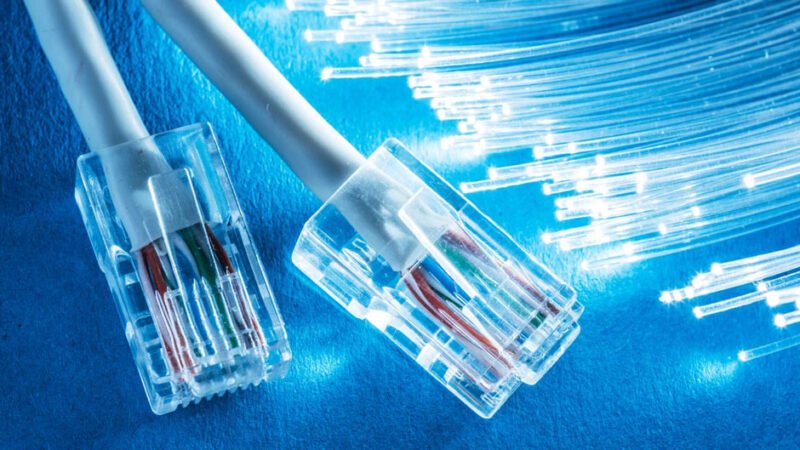Fiber internet is one of the fastest internet types in terms of its speed and reliability and is available to hundreds of households in the US. In fact, its popularity has grown a lot in the past year as more than 70 million homes switched to this internet type.
This type of internet connection has significantly affected the way we use the internet and there’s a good reason for it. Here’s everything you need to know about fiber internet.
Fiber Internet Explained
Fiber internet is basically a type of internet connection that relies only on the fiber optic cables to transmit data from the sender to the recipient. Fiber optic cables are a type of cable that sends data that via light. Yes, you heard it right. A thin strand of glass contains information or data packets in the form of light that can reach from one place to another in no time. That is why it is so efficient and fast at transferring data from one place to another.
Having said that, the exact internet infrastructure is difficult to build and even more difficult to maintain because those wires are being laid under the surface of the sea and on a bed of sand. Every now and then, a pressure point occurs deep below the sea somewhere in the fiber-optic cables that is pretty difficult to fix. That is why the plans you see for the fiber-optic internet is more expensive than the traditional cable internet.
I hope that you understand what fiber internet is, so let’s talk about how it works.
How Does Fiber Internet Work?
This is the question that I myself have been asking and finally understand comprehensively, how it works. So, let me share that with you, too.
The first step is breaking down the data into small packets so that it becomes easier to transmit. Then we have the process of turning it into light so that it can be transferred as light. This process is critical because there is a chance that in the conversion to light process, the data gets lost. Transceivers are actually the devices that convert electrical signals into light signals. They are totally not affordable to make, and require constant maintenance to minimize data loss.
Anyway, if the data is converted perfectly into the light (or maybe not), it passes through the fiber cable. Fiber-optic cables, as explained already, are cables that rely on a thin strand of glass to transmit data from one place to another. The data is being entered from one end of the transceiver and is converted to light. Then it is transferred to the desired or intended transceiver.
On the other end, the transceiver then converts the light signals back to the electrical signal, so that it can be transmitted over different channels like cable or WiFi modems.
This process doesn’t happen just once; it keeps on going, and going on until people stop sharing on the internet. This is how it works. The process is much more complicated than what I have explained. It takes great detail to work with fiber optic cables, and that is why it is costly.
How Fast is Fiber Internet?
There is no one answer to this question. If we talk solely about the speed of fiber optic cables, they can transfer data as heavy as tons of gigabits, but when it comes down to what consumers are actually getting, the answer becomes highly variable.
What I have seen, and what major telecommunications providers in the US offer, is 5 gigabits of speed, but this advertised speed is also subjective. For example, not everyone will have access to high-speed, as laying the fiber optic infrastructure is pretty difficult. Rural areas usually don’t have access to any fiber-optic network, so the speeds on that end will vary.
If we are staying in the realm of consumer internet, another factor affecting the speed of the fiber internet is the devices at home, such as routers and modems. For example, if your router isn’t compatible with your internet service provider’s network, you might find that your internet speeds are fluctuating.
Another thing to note here is the symmetrical download and upload speeds offered by fiber internet service, which is not possible with other types of internet connections. As a quick refresher, download speeds are the speeds at which you can download data in your devices, while upload speed is the speed at which data can be sent over the internet. And one of the greatest features of fiber internet is its ability to transmit data same way as downloading data. For example, if you get a 100 Mbps plan, the download and upload speed will both be 100Mbps.
To conclude, I am going to say that the fiber internet is worth it. Even though it costs more than your regular cable internet, the upsides outweigh the cost, and it is great.









